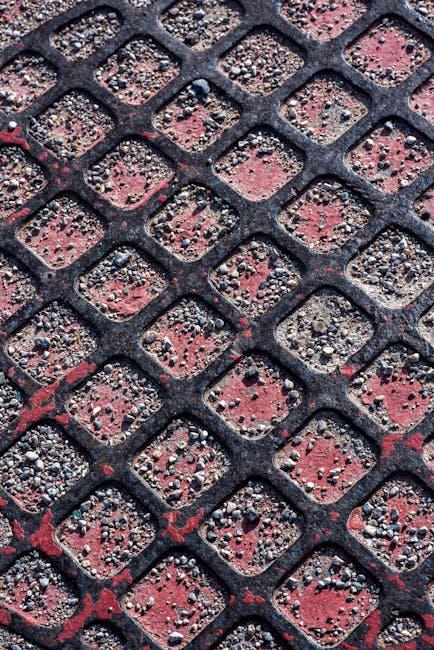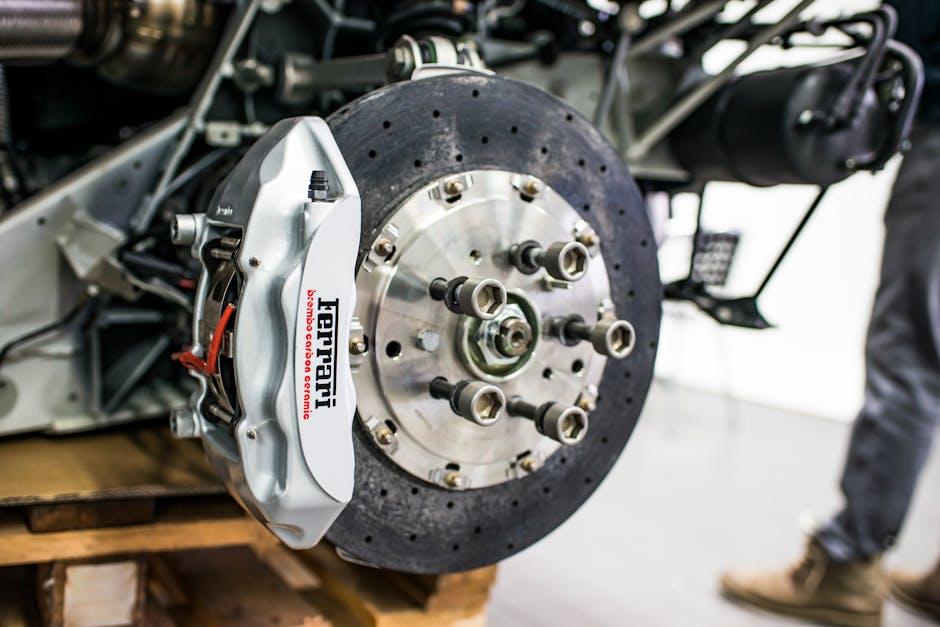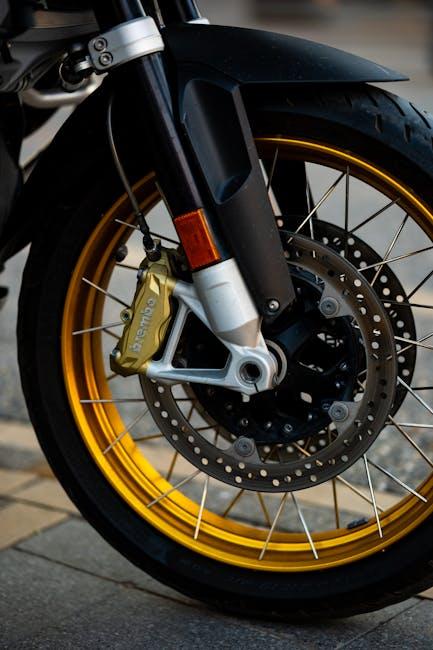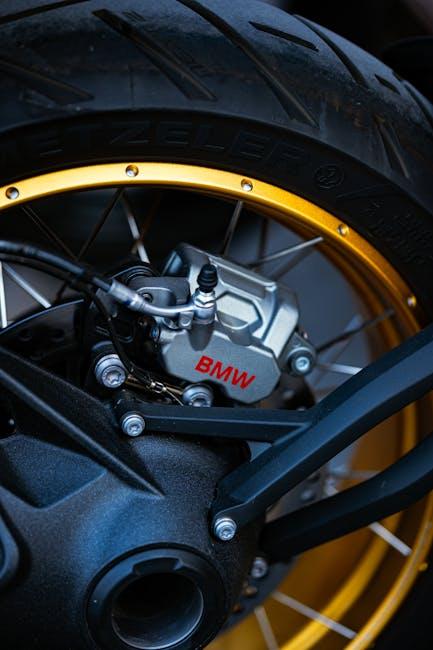There’s nothing quite like the sudden, high-pitched squeal of brakes to disrupt the rhythm of your drive. That sharp, metallic cry is more than just an annoyingly persistent sound—it’s a signal from your vehicle that something isn’t quite right. Whether you’re navigating busy city streets or winding country roads, squeaky brakes can steal your peace of mind and hint at underlying issues. In this article, we’ll peel back the layers of this common automotive hiccup, exploring why brakes squeak and what practical steps you can take to silence the noise and keep your ride smooth and safe.
Table of Contents
- Understanding the Common Triggers Behind Squeaky Brakes
- The Role of Brake Pad Materials in Noise Generation
- How Moisture and Environmental Factors Affect Brake Sounds
- Diagnosing Worn Components and Their Impact on Brake Performance
- Effective DIY Solutions to Silence Squeaky Brakes
- When to Seek Professional Help for Persistent Brake Noise
- Q&A
- Key Takeaways

Understanding the Common Triggers Behind Squeaky Brakes
One of the primary instigators behind those annoying squeaks is the accumulation of dust and debris on the brake components. When tiny particles settle between the brake pads and rotors, they create friction that leads to noise. Another culprit is the glazing of brake pads, which happens when pads overheat and develop a smooth, hardened surface that reduces grip and results in a high-pitched squeal. Additionally, moisture and rust buildup on the rotor surface after exposure to rain or washing can trigger transient squeaks until the brakes warm up and clean themselves off.
It’s also important to consider the mechanical aspects contributing to these sounds. Worn or improperly installed brake pads can cause uneven contact with the rotor, creating vibrations that manifest as squeaks. Sometimes, the lack of lubrication on the brake hardware like shims and caliper slides can amplify these noises, especially during brake application. Below is a quick overview of common triggers:
- Brake pad material: Some compositions are naturally noisier.
- Rotor condition: Warped or scored rotors create uneven braking surfaces.
- Brake hardware: Missing or damaged anti-rattle clips increase vibration.
- Driving habits: Aggressive braking can accelerate pad and rotor wear.

The Role of Brake Pad Materials in Noise Generation
When it comes to the persistent squealing of brakes, the composition of the brake pads plays a pivotal role. Different materials interact uniquely with the rotors, influencing the sound produced during braking. For instance, semi-metallic pads, which contain a mix of metals and other compounds, tend to generate more noise due to their harder texture and higher metallic content. Conversely, organic pads, made from natural fibers and resins, typically operate more quietly but may wear out faster and offer less stopping power under extreme conditions.
Factors contributing to noise from brake pad materials include:
- Hardness and texture of the material
- Presence of metal particles or fillers
- Heat dissipation properties
- Surface finish and manufacturing quality
| Brake Pad Type | Noise Level | Durability | Best For |
|---|---|---|---|
| Semi-metallic | High | High | Performance & Heavy Duty |
| Organic | Low | Moderate | Daily Driving |
| Ceramic | Low | High | Quiet & Clean |
Choosing the right material requires balancing noise tolerance with performance needs. For drivers sensitive to squeaks, ceramic brake pads may offer the perfect compromise—combining quieter braking with durability and less dust production. Understanding these material characteristics allows for smarter choices that can seriously reduce those annoying squealing sounds while maintaining optimal safety on the road.

How Moisture and Environmental Factors Affect Brake Sounds
Brake noises often become more noticeable during changes in weather, especially when moisture is involved. Water creates a thin layer between the brake pads and rotors, causing a mild squeaking as you apply pressure. This happens because the moisture temporarily alters the friction properties of the braking surfaces. While the sounds may disappear after a few brake applications once the parts dry out, persistent humidity or frequent rain can accelerate pad wear and promote rust build-up on the rotors, both of which contribute to continuous noise.
Environmental factors such as temperature fluctuations and road salt also play a significant role. Cold weather tends to stiffen brake components, making them less flexible and prone to squeal. Meanwhile, salt and dirt deposits from winter roads can embed between the pads and rotors, acting like tiny abrasives that amplify the noise. Staying proactive with regular cleaning and using protective treatments can reduce the impact of these conditions.
- Humidity: Causes temporary squeaks due to moisture layering.
- Cold temperatures: Stiffen brake materials, increasing noise.
- Salt & dirt: Cause abrasive interactions and corrosion.
| Environmental Factor | Effect on Brake Sound | Recommended Care |
|---|---|---|
| Moisture | Temporary squeaks | Regular brake use after rain |
| Cold Weather | Stiffness-induced noise | Warm up brakes gradually |
| Road Salt | Corrosive abrasion | Frequent washing in winter |

Diagnosing Worn Components and Their Impact on Brake Performance
When brake components start to wear down, the subtle symphony of your vehicle’s stopping power turns into an unwelcome squeal. Key players like worn brake pads, glazed rotors, or even deteriorated caliper hardware can disrupt the harmony, leading to irritating noises and compromised performance. Brake pads lose their friction material over time, which not only triggers squeaking but reduces stopping efficiency. Likewise, rotors may develop grooves or a hardened surface (glazing), decreasing the smooth engagement between pad and rotor.
Identifying these worn parts early can make a significant difference. Here are common signs linked with degraded components:
- Uneven brake pad wear: Causes vibration and inconsistent braking pressure.
- Surface glazing on rotors: Leads to a squeaky sound and less effective braking.
- Loose or damaged caliper hardware: Creates rattling noises and uneven brake application.
| Component | Symptom | Impact on Brake Performance |
|---|---|---|
| Brake Pads | Squealing, reduced thickness | Loss of friction, poor stopping power |
| Rotors | Glazing, scoring marks | Increased stopping distance, noise |
| Caliper Hardware | Rattling, uneven pad wear | Brake drag, inconsistent braking |

Effective DIY Solutions to Silence Squeaky Brakes
When your brakes start to squeak, it’s often a sign that some simple, hands-on maintenance is needed rather than an expensive repair. One of the easiest ways to quiet those obnoxious noises is by applying brake lubricant to the back of the brake pads. This helps reduce metal-on-metal friction that causes squealing. Additionally, cleaning your brake components with a brake cleaner spray removes dust and debris that build up over time, which can also lead to noise. Sometimes, just tightening or loosening the caliper bolts slightly can eliminate vibration-induced squeaks.
For a more thorough approach, consider these effective at-home methods:
- Sand the brake pads: Lightly scuffing the surface of the brake pads smooths out any unevenness causing frictional noise.
- Install anti-squeal shims: These thin metal or rubber pieces placed between the pads and caliper act as vibration dampeners.
- Check rotor condition: Warped or glazed rotors often contribute to noise; resurfacing or replacing them may be necessary.
| DIY Step | Tools Needed | Estimated Time |
|---|---|---|
| Apply Brake Lubricant | Brake grease, rag | 10 minutes |
| Clean Brake Components | Brake cleaner spray, brush | 15 minutes |
| Install Anti-Squeal Shims | Shims, socket wrench | 20 minutes |

When to Seek Professional Help for Persistent Brake Noise
Persistent brake noise can signal more than just minor wear and tear; it might indicate a deeper mechanical issue that requires expert attention. If you’ve tried basic solutions like cleaning or applying brake lubricant and the squeak still refuses to disappear, it’s time to consider professional diagnostics. Moreover, if the noise is accompanied by unsettling sensations such as vibration, reduced braking efficiency, or a grinding sound, these are red flags that shouldn’t be ignored.
Professional mechanics have the tools and expertise to uncover hidden problems and advise on safe repairs. When visiting a specialist, be sure to mention any specific symptoms you’ve noticed. Here’s a quick checklist to determine when professional intervention is necessary:
- Continuous squealing after pad replacement
- Brakes feel spongy or unresponsive
- Grinding noises during braking
- Brake warning lights on the dashboard
| Symptom | Possible Cause | Recommended Action |
|---|---|---|
| Persistent squeak | Worn pads or glazing | Inspect and possibly replace pads |
| Grinding sound | Metal-on-metal contact | Immediate brake service required |
| Soft brake pedal | Air in brake lines or fluid leak | Brake system inspection and bleed |
Q&A
Q: Why do my brakes make a squeaky noise when I press them?
A: Squeaky brakes often arise from friction materials vibrating against the rotor or drum. This can be due to worn brake pads, glazing on the pad surface, or accumulation of dust and debris. Sometimes, moisture or rust buildup on the rotors can also trigger that annoying squeal.
Q: Is a squeaky brake always a sign of a serious problem?
A: Not necessarily. While squeaky brakes can indicate wear or minor issues, sometimes it’s just harmless dust or temporary moisture causing the noise. However, persistent squealing should be checked to rule out brake wear or damage.
Q: Can brake pads cause the squeaky sound?
A: Absolutely. Worn or low-quality brake pads often produce a high-pitched squeal as their metal wear indicators scrape against the rotor. Additionally, glazed or hardened pads can lose effective friction and cause noise.
Q: How does weather affect brake noise?
A: Damp or cold conditions can cause a temporary squeak as moisture settles on brake components. Similarly, after a car sits unused for a while, surface rust on the rotors can create noise until it wears off with use.
Q: What are some quick fixes to stop brake squeaking?
A: Cleaning the brake components to remove dust, applying brake grease to the pad backing, and ensuring the pads are properly installed can reduce noise. Sometimes simply driving the car to clear light rust or moisture will help.
Q: When should I see a mechanic about my squeaky brakes?
A: If the noise persists after a short drive, gets louder, or is accompanied by reduced braking performance, uneven pedal feel, or vibrations, it’s wise to have a professional inspect your brakes promptly.
Q: Can upgrading brake parts solve the squeak?
A: Yes. High-quality ceramic brake pads, rotors with anti-noise designs, and proper installation can significantly reduce or eliminate squeaky brakes.
Q: Does brake squeaking mean my brakes are unsafe?
A: Not always, but it’s a warning sign that shouldn’t be ignored. If squeaking accompanies poor braking or strange pedal sensations, safety can be compromised and immediate attention is needed.
Q: Are brake silencers effective?
A: Brake silencers, like shims and anti-squeal compounds, can dampen vibrations causing noises. When applied correctly during brake servicing, they help minimize squeaks.
Q: How often should brake components be checked for noise issues?
A: Regular brake inspections—usually with every oil change or at least twice a year—can catch early signs of wear or conditions that cause squeaky brakes, keeping your stopping power smooth and silent.
Key Takeaways
In the symphony of your daily drives, squeaky brakes can be an unexpected—and unwelcome—note. By understanding the common causes, from worn pads to dust buildup, and applying the right solutions, you can restore harmony to your ride. Remember, addressing these sounds early not only keeps your vehicle singing smoothly but also ensures your safety on the road. So next time your brakes start to squeak, consider it a helpful nudge, guiding you toward a quieter, smoother journey ahead.
